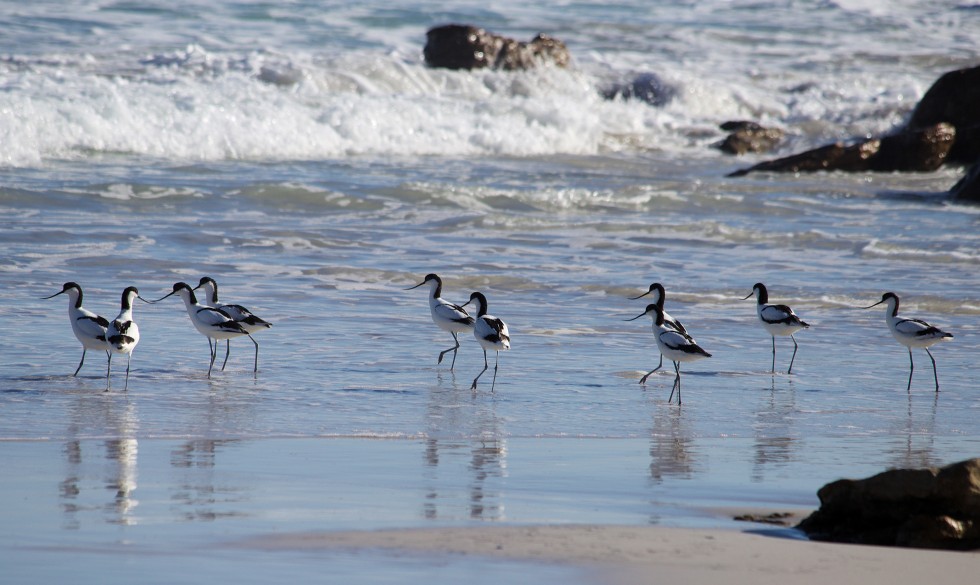Avocet & Stilt Week
Fascinating Facts About Avocets & Stilts

Flock of American Avocets and Black-necked Stilts (as well as a Reddish and Snowy Egret)
Among the ten total global species of avocets and stilts, wading birds that are members of the Recurvirostridae family, there are a lot of interesting information and fascinating facts. Following our Amazing Adaptations post, here are some more facts about these long-legged birds.
Bird Terms Related to Avocets and Stilts
- Avocets and stilts are cosmopolitan -- they can be found nearly all around the world, with the exception of Antarctica.
- Baby stilts and avocets are precocial. They are covered with down and their eyes are open at hatching. The can walk and feed themselves just hours later.
Taxonomy Tidbits
- A Special Subspecies: The Hawaiian Stilt (Himantopus mexicanus knudseni) is an endemic, endangered subspecies of the Black-necked Stilt of the Americas. The Hawaiian Stilt is known as the aeʻo or kukuluaeʻo locally, is at risk of extinction due to habitat loss and predation by non-native species (a common problem for native Hawaiian birds).
- The Black-necked Stilt itself is considered to be a subspecies of the Black-winged Stilt by some taxonomic authorities; the AOS (American Ornithological Society) has always considered it to be its own separate species.
- Taxonomy of the White-backed Stilt is also disputed, with some authorities considering it a subspecies of the Black-necked Stilt rather than its own separate species.
Long-legged and Long-lived!
- The longevity record for a wild American Avocet is just over 15 years for a bird banded in California.
- The longevity record for a wild Black-necked Stilt is nearly 17 years, known from a bird first banded in 2002 and retrapped and released in 2019.
- The longevity record for a wild Pied Avocet is nearly 28 years! This is known from bird ringing done in the Netherlands; the ring numbers were read in the field so the final disposition for this individual is unknown.
- The longevity record for a wild Black-winged Stilt is almost 19 years. This information is known from bird ringing done in Portugal and, like the Pied Avocet, was learned from reading ring numbers on a live bird.
What's In a Name?
- The Pied Avocet is also known as the Black-capped Avocet, the Eurasian Avocet, or simply as Avocet in English-speaking regions of its range.
- The Black Stilt of New Zealand is known as kakī in Maori.
- The Pied Stilt is also commonly known as the White-headed Stilt.
- The Red-necked Avocet has several alternative common names: Australian Avocet; Cobbler's Awl; and Painted Lady. A cobbler's awl is a sharp tool, often with a curved tip, used to punch holes in materials like leather and vinyl. The shape of the cobbler's awl resembles the upcurved beak of avocets.

































































































